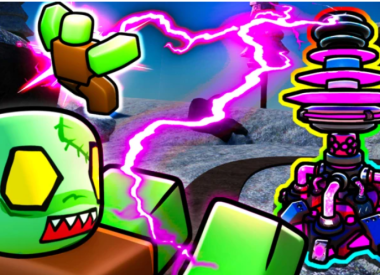Writing and developing a good video game conclusion is tough, if the number of bad endings we’ve seen in the last 20-30 years is any indication. But sometimes developers manage to put a perfect bow on their stories, tying everything together in a manner both satisfying and consistent with the rest of the experience. And I’m convinced MachineGames stuck that landing better than any other studio in the finale for Wolfenstein 2: The New Colossus.
This article contains spoilers (including details on the ending moments) for Wolfenstein 2: The New Colossus. If you haven’t finished the game, and don’t want anything spoiled, we suggest bookmarking this article and returning later.
Gamers and developers have long been divided on how best to wrap up a game. Some genres have certainly settled on defaults. Overpowered enemies with gargantuan health pools have become standard in JRPGs, while Bethesda games usually end with a conversation tying their disparate parts back together. But action games, particularly shooters, usually have a more diverse palette to work with. Some pit you against a damage sponge. Others rely on quick time events or cinematic sequences to close out the narrative. But the best endings pair a blistering final battle, in which the protagonist is heavily outnumbered and outgunned, with a final narrative sequence that includes (at most) a single button press to dispatch the antagonist. Nowhere is that more evident than in Wolfenstein 2: The New Colossus.
I say “best endings” because they’re the most fitting for projects like Wolfenstein. It would have been easy for MachineGames to get cheesy with the game’s final moments. The Third Reich’s fondness for military science and human experimentation is well established. Those pursuits inspire most of what we see in The New Colossus. Rockets provide intercontinental travel. The Nazis have a base on Venus. Androids and robotic prosthetics are commonplace. Most players wouldn’t bat an eye at a final encounter that pit BJ against a Nazi leader in a mech or radically transformed by some sort of super soldier serum. But those machinations weren’t the reason we feared the Nazis. The Third Reich’s ability to inspire unforgivable acts of genocide is what made them terrifying. So the big evil waiting at the end of BJ’s journey shouldn’t be able to absorb inhuman punishment. They should be as susceptible to a sharpened edge as any living person.
Obviously, a quick stab doesn’t offer the kind of climactic conclusion that you’d expect by the end of Wolfenstein 2. That’s what makes the game’s penultimate sequence, which pits BJ against waves of increasingly deadly Nazi soldiers, so fitting. General Engel, the bitter, angry heart of the Nazis’ American war machine, must be protected from those who’d seek to do her harm. The Reich is willing to sacrifice the lives of every single soldier in her proximity to protect Engel. Armored soldat are propelled onto the battlefield in pairs. Soldiers carrying a variety of firearms scurry out of many doors. And by the end you’re fighting the Nazi equivalent of Iron Man’s Hulkbuster armor. The battle for the Ausmerzer is hectic and heavily-weighted in the Nazis’ favor. But you emerge from it feeling like you (or, more accurately, BJ) could take on the entirety of Hitler’s army.
Even on the easiest difficulty, the battle still throws enough bodies at you to communicate the seriousness of the encounter. And choosing a harder setting only makes it more clear the waves of heavily-armored soldiers between Blazkowicz and level’s end are either guarding the finale or some untold object that sets those moments in motion. You couldn’t ask for a better penultimate sequence without abandoning the elements that distinguish Wolfenstein 2 from other games of its ilk. There are occasional descents into fantasy, like going to Venus or the marketing-friendly Panzerhunds, but Wolfenstein 2 never lets you forget the real enemy: those who let fear justify hatred and violence. It’s story and message stay grounded, even when the content doesn’t.
MachineGames’ Wolfenstein sequel explores some of the darkest corners of the human psyche. It’s shocking, even for a game about an alternate timeline where the Nazis won. By the time BJ finally chases down General Engel, there’s a good chance you’ll hate her more than most video game baddies in recent memory. I certainly did. And as I finished the last stretch of Wolfenstein 2, sneaking over, under and around the audience members seated between BJ and his target, I felt an odd mix of nervousness and excitement. Fear that Engel would escape again. Or worse, that she’d somehow planned for this too. That just when it looked like the resistance might finally gain a foothold, their progress would be ripped away again. But it wasn’t.
Nobody got chased down an impossible maze of hallways. No extended hand-to-hand combat sequence that must be replayed after every mistake. No cinematic ending that strips the player of their agency when it comes time for resolution. Only the stunned faces of a live television audience, none of whom expected to watch Blazkowicz bury a hatchet in Engel’s skull when they took their seats at the Jimmy Carver show.
I thrust my arms into the air. The war wasn’t over. The Nazis hadn’t been defeated. But General Engel was gone. And the struggle to claim that last kill created a lasting feeling that a blow had been dealt to the occupiers. The groundwork is laid for a Wolfenstein trilogy. And the combined efforts of those moments delivered one of the best video game endings in recent memory.
Wolfenstein 2: The New Colossus is currently available on PS4, Xbox One and PC.
- Great story
- Fun, if repetitive, gameplay
- Memorable characters
- Minor bugs



















